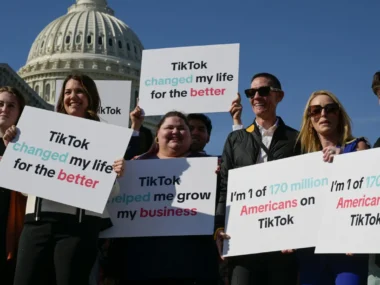When Vice President Kamala Harris chose Minnesota Governor Tim Walz as her running mate, Minnesota gained national attention. The culture and cuisine of the Upper Midwest, like the extended “Minnesota Goodbyes,” the contrast of “Minnesota Nice,” and local favorites like pop, tater tot hotdishes, and Ju(i)cy Lucys (soda, casseroles, and cheese-filled burgers), became lighthearted topics for commentators. Even Sweet Martha’s famous overflowing pail of cookies, a State Fair classic, got a mention on “The Daily Show.”
Beyond the charm, Walz’s rise to the national stage puts Minnesota’s economic performance in the spotlight during an election where the cost of living and job market stability are key issues.
Here’s an overview of the Minnesota economy and its projected path:
Economic growth has been slow.
In 2023, Minnesota’s real GDP grew by just 1.2%, ranking it 45th among states, with only Georgia, Mississippi, New York, Wisconsin, and Delaware performing worse. The U.S. economy grew at more than twice Minnesota’s rate. At the start of 2024, the situation remained challenging: National economic growth slowed to 1.4% in Q1, while Minnesota’s GDP shrank by 0.8%.
This economic decline wasn’t isolated to Minnesota. Neighboring states like North and South Dakota, Illinois, and Iowa also experienced negative growth.
“Minnesota’s growth trends are heavily influenced by larger regional factors,” said Tyler Schipper, assistant professor of economics and data analysis at the University of St. Thomas in St. Paul, Minnesota. “Aging populations, lower immigration, and limited access to coastal export markets contribute to the Midwest’s economic challenges.”

Tim Walz addressed the media after the FarmFest agricultural forum in Morgan, Minnesota, on August 3, 2022.
Population changes
Recent population trends in Minnesota are driven more by migration than by mortality rates, which have been surpassed by births from 2020 to 2023, according to Schipper. Recent Census data shows that more residents have left Minnesota than moved in. In 2022, the state’s net domestic migration was -28,893, with only eight other states experiencing larger outflows. However, this loss decreased to -4,686 in 2023.
Minnesota has also seen significant international immigration, particularly from the Somali community, which helped offset domestic migration losses and resulted in a positive overall net migration for the last year.
Schipper noted that while there is outflow, it’s not a mass exodus. Phelan observed that companies and affluent individuals leaving other states often choose destinations like Florida, Texas, or Idaho rather than Minnesota.
Taxes as a bogeyman
One major factor driving people away from Minnesota is the state’s high taxes. With a corporate income tax rate of 9.8%, Minnesota has the highest rate in the U.S. after New Jersey’s rate dropped due to a surcharge expiration.
Although the 9.8% rate has been in place for over 15 years, critics argue that recent actions by the Walz administration, such as increasing personal income taxes, removing deductions for high earners, and expanding corporate tax to include international business income, have worsened the situation.
Doug Loon of the Minnesota Chamber of Commerce claims that while other states have reduced taxes and regulatory burdens, Minnesota has increased them, making it less affordable for residents and businesses. This growing tax and fee burden, he says, puts Minnesota at a competitive disadvantage.
Low joblessness, varied economic sectors
The Mississippi River laid the foundation for Minnesota’s diverse economy, beginning with sawmills and flour mills. Over time, this has evolved into a robust, varied economy that has supported the Twin Cities and the state through tough periods, according to Loon.
Loon emphasized that the state’s diverse economy has been a key strength for over a century. He attributed this success to Minnesota’s innovative, industrious, and skilled workforce, which has historically attracted highly educated and skilled individuals from around the world.
Minnesota is the third highest in the nation for Fortune 500 companies per capita, featuring major firms like United Health, General Mills, Target, Best Buy, 3M, CHS, and Land O’ Lakes.

On September 29, 2020, individuals were seen entering the main entrance of the Mayo Clinic in Rochester, Minnesota.
Health care is the state’s largest industry, with the Mayo Clinic in Rochester being a major player. Other significant sectors include advanced manufacturing, agriculture, retail, education, and clean energy.
Adam Kamins from Moody’s Analytics noted that while Minnesota has higher taxes compared to some states, the overall business environment remains strong, preventing significant corporate relocations.
The state’s labor market lagged in recovering jobs lost during the pandemic, with cities like Minneapolis and St. Paul struggling due to remote work trends. However, Minnesota’s job market displayed resilience during the recovery, with its unemployment rate among the lowest in the nation and even hitting record lows. Additionally, inflation in the Minneapolis metro area slowed more compared to other regions.
Loon emphasized the importance of growing the population to support the economy’s needs.
The role of Minneapolis
Kamins highlighted that Minneapolis will be crucial to the state’s future economy. Although the city has experienced slower growth compared to smaller metro areas and rural regions, notably driven by Rochester and the Mayo Clinic, it remains vital.
The civil unrest following George Floyd’s murder in 2020 put Minneapolis in the spotlight for reasons it preferred to avoid. Kamins suggested that while this might have had a minor impact on the city’s reputation and migration patterns, the effect is likely to be temporary.
Despite these challenges, Minneapolis is seeing ongoing economic investment and redevelopment, particularly around Lake Street and George Floyd Square. The city is also emphasizing affordable housing, land use changes to boost residential supply, and initiatives to address racial wealth gaps and support Black homeownership.
Creating opportunities for future expansion
Walz’s initial term was marked by the pandemic, the fallout from Floyd’s death, and a divided government. Upon starting his second term, he proclaimed that “the era of gridlock” was over.

On March 17, 2023, Tim Walz received a hug from Webster Elementary students in Minneapolis after signing a bill guaranteeing free school meals for all students in Minnesota’s public and charter schools.
With the Democratic Party controlling both state houses, the Walz administration utilized a $17 billion surplus to push through a progressive agenda. This included free college tuition for low-income families, universal free school meals, a child tax credit, abortion access protection, gender-affirming care support, affordable housing investments, and a paid family and medical leave law.
The Harris-Walz campaign praised these policies, noting Walz’s effective leadership and the state’s record-low unemployment rate. CNBC even named Minnesota the best state for business outside the South.
While many new laws and programs are still in early stages or not yet operational (e.g., the paid leave program starts in 2026), they set the groundwork for future development. Matt Varilek of the Minnesota Department of Employment and Economic Development emphasized the administration’s focus on creating a more inclusive economy, though he acknowledged that more work remains.











